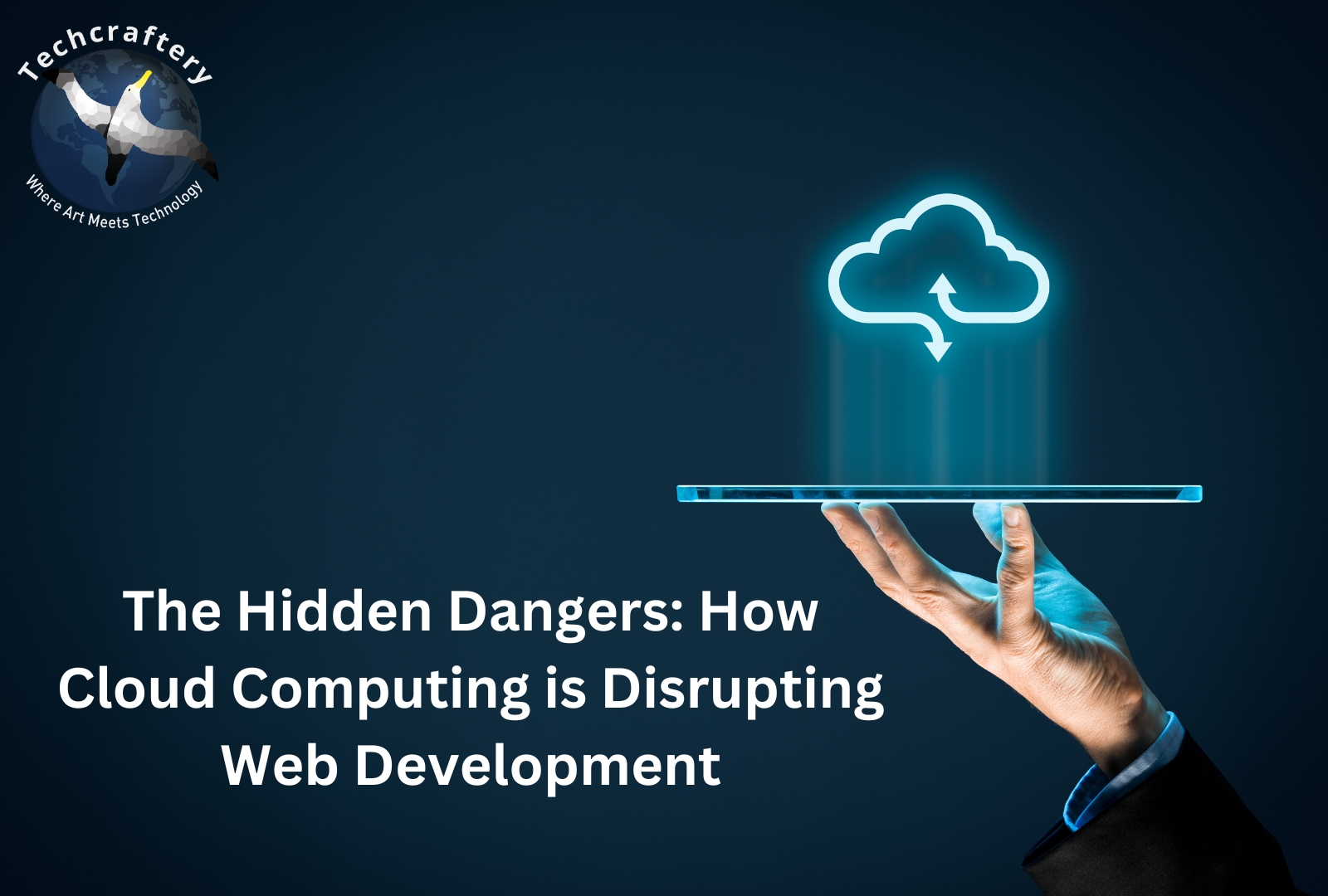Cloud computing has revolutionized how businesses operate, offering on-demand access to computing resources, scalability, and cost-efficiency. However, this technological advancement comes with its own set of challenges and potential pitfalls, particularly in web development. As more companies shift their operations to the cloud, it is essential to critically examine the hidden dangers that may disrupt the web development landscape. This article delves into the implications of cloud computing on web development, addressing concerns such as data security, vendor lock-in, performance issues, and collaboration challenges.
1. The Allure of Convenience: A Double-Edged Sword
Cloud computing presents numerous advantages that attract businesses to adopt this technology. The promise of instant access to resources and scalability can be enticing. However, the convenience that cloud services provide can lead to complacency among developers and teams.
1.1. Over-Reliance on Cloud Platforms
Many web developers find themselves depending heavily on cloud platforms like AWS, Google Cloud, and Microsoft Azure for hosting, storage, and development environments. While these services simplify many processes, they can create a disconnect between developers and the technologies they are using. Over time, developers may lose touch with essential skills and knowledge about on-premises solutions and traditional server management.
1.2. The Risk of Skill Erosion
As developers lean more on cloud services, they may neglect to learn or maintain skills relevant to managing and optimizing on-premises servers or infrastructure. This erosion of skill can become a significant problem when companies need to transition away from the cloud due to cost, performance, or security issues. The lack of foundational knowledge may hinder their ability to troubleshoot or adapt.
2. Data Security: A Growing Concern?
One of the most significant selling points of cloud computing is the promise of robust security measures and compliance with various regulations. However, data breaches and cyberattacks continue to plague organizations that rely on cloud services.
2.1. Vulnerabilities in Cloud Security
While cloud providers implement advanced security protocols, the reality is that no system is infallible. High-profile data breaches have shown that even the most reputable cloud services can be vulnerable. Organizations must consider the implications of entrusting sensitive data to third-party providers.
2.2. Accountability and Responsibility
When a security breach occurs, determining accountability can be complex. Is it the developer’s responsibility for securing the application, or does the cloud provider share some blame? This ambiguity can lead to disputes and challenges when organizations seek to address the fallout from a breach.
3. Vendor Lock-In: A Risky Commitment
Another significant concern with cloud computing is vendor lock-in, where businesses become so dependent on a single cloud provider that transitioning to another service becomes extremely difficult.
3.1. The Challenge of Migration
Once a company migrates its applications and data to a specific cloud platform, moving away from that provider can be a daunting task. This migration process may require extensive reconfiguration, rewriting of applications, and retraining of personnel. The costs and complexities involved can deter businesses from switching providers, even if they experience issues.
3.2. Rising Costs and Dependency
Vendor lock-in can lead to escalating costs over time. As a company’s reliance on a specific cloud provider deepens, it may find itself subject to price increases or unfavorable contract terms. Organizations may feel trapped, unable to negotiate better rates or services, further straining their budgets.
4. Performance Issues: The Cloud Can Be Unpredictable
While cloud services are designed to provide high availability, performance can sometimes falter. Outages, slow response times, and service disruptions can significantly impact web applications.
4.1. The Reality of Downtime
Despite SLAs (Service Level Agreements) promising high uptime, many businesses have faced unexpected downtime due to technical issues with their cloud provider. This downtime can lead to lost revenue, customer dissatisfaction, and damage to the brand’s reputation.
4.2. User Experience and Expectations
In a world where users expect instant access and responsiveness, any performance hiccup can result in frustration. If users encounter slow load times or downtime, they may turn to competitors who offer a more reliable experience.
5. Collaboration Challenges: Remote but Not Seamless
The shift to cloud computing has facilitated remote collaboration among teams, but it has also introduced new challenges.
5.1. Miscommunication and Fragmentation
When teams are dispersed, communication can become fragmented. Teams may rely on various cloud-based tools for project management, document sharing, and communication, leading to potential miscommunication and confusion. Important information can get lost in the shuffle, impacting productivity.
5.2. The Illusion of Collaboration
While cloud tools promise seamless collaboration, they can create an illusion of teamwork. Team members may feel isolated, working independently without meaningful engagement with colleagues. This lack of interaction can hinder creativity and collaboration, leading to subpar outcomes.
6. Hidden Costs: Beyond Subscription Fees
While cloud computing often reduces upfront costs, organizations may overlook the hidden costs associated with these services.
6.1. Unexpected Charges
Many cloud providers operate on a pay-as-you-go model, which can lead to unexpected charges. As usage increases, so do costs. Organizations may find themselves facing substantial bills that exceed their budgets due to increased traffic, additional storage needs, or unforeseen usage spikes.
6.2. The Cost of Inadequate Planning
Failure to plan and monitor cloud usage effectively can lead to wasted resources and budget overruns. Organizations must invest time in understanding their usage patterns and optimizing resource allocation to avoid unnecessary expenses.
7. Compliance and Legal Challenges
Cloud computing introduces new complexities in terms of compliance with data protection regulations and legal frameworks.
7.1. Navigating Regulatory Requirements
Organizations must navigate various regulatory requirements when using cloud services, especially regarding data privacy and protection. Different regions have distinct laws, and compliance can become a burden for organizations operating internationally.
7.2. Liability and Legal Risks
The shared responsibility model of cloud computing raises questions about liability in the event of a data breach or compliance failure. Organizations must ensure they understand the terms of their agreements with cloud providers and the legal implications of data storage and processing in the cloud.
8. Limited Customization and Control
Cloud computing often requires organizations to adapt their applications to fit the provider’s infrastructure, limiting customization options.
8.1. The Trade-off Between Flexibility and Convenience
While cloud services provide flexibility and scalability, they may not offer the same level of customization as traditional on-premises solutions. Organizations may find it challenging to implement specific configurations or optimizations that suit their unique needs.
8.2. Control Over Data and Infrastructure
Using cloud services means relinquishing some control over data and infrastructure. Organizations must trust their cloud providers to manage and secure their data. Any issues or outages with the provider can directly impact the organization’s ability to function.
9. The Importance of Due Diligence
Given the hidden dangers associated with cloud computing, it is crucial for organizations to conduct thorough due diligence before migrating to the cloud.
9.1. Assessing Cloud Providers
Organizations should evaluate potential cloud providers based on their security measures, compliance with regulations, and track record of reliability. Understanding a provider’s service level agreements and support options is also essential.
9.2. Developing a Comprehensive Cloud Strategy
Before adopting cloud computing, businesses should develop a comprehensive strategy that outlines their objectives, expected benefits, and potential risks. This strategy should include guidelines for data management, security, and compliance.
10. Preparing for the Future: Mitigating Risks
As cloud computing continues to evolve, organizations must be proactive in mitigating the risks associated with this technology.
10.1. Investing in Training and Development
To avoid skill erosion and ensure that developers remain proficient in relevant technologies, organizations should invest in ongoing training and development programs. Keeping teams updated on the latest advancements in cloud computing and web development is crucial.
10.2. Building a Contingency Plan
Organizations should have contingency plans in place to address potential cloud outages or security incidents. Establishing protocols for incident response, data recovery, and communication can minimize disruptions and protect valuable data.





